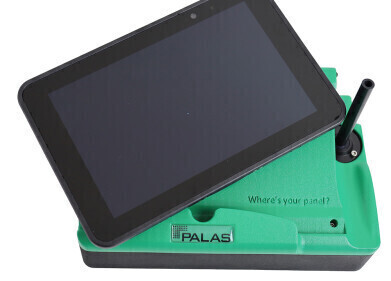Indoor air quality monitoring (IAQ)
Is Your Home and Office Air Killing You?
Jul 12 2016
When it comes to air pollution – a hot topic in environmental news right now – most of the headlines are stolen by the fumes contaminating the airwaves outside. Car exhausts, power plant stacks and other external sources of pollution are rightly targeted as areas in need of improvement… but often to the exclusion of indoor air pollution.
Despite being responsible for the majority of pollution-related deaths, indoor air is largely ignored by the media, businesses and lawmakers. As a result, the air inside our homes and offices (the places where we spend the vast majority of our time) is becoming more and more contaminated, leading to more and more health complications on a global scale.
Indoor air the unsung villain
On average, we spend about 90% of our daily lives indoors. As such, it should come as no surprise that the air we breathe in these environments has a huge effect on our physical wellbeing. Since we tend to think of pollutants coming almost exclusively from external sources, it’s easy to dismiss the danger posed by contaminated indoor airwaves.
However, of the approximately seven million people killed by air pollution each year, more than half of these deaths (roughly 4.3 million) are attributable to indoor exposure. Indeed, the benefits of air quality sensors in building management are manifold: they can not only avoid damage to health and shortened lifespans, but also improve productivity, eliminate friction between inhabitants or employees and on a more pragmatic level, nullify the threat of litigation.
However, monitoring the air for pollutants such as particulate matter 2.5 (PM2.5), carbon monoxide (CO), volatile organic compounds (VOCs) and carbon dioxide (CO2) among others is only half the battle. In order to reduce the risk to our lives and our health, we must take affirmative action – especially in the developing world.
Poorer countries more at risk
Data provided by the World Health Organisation (WHO) shows that people in impoverished parts of the world are far more at risk of breathing in contaminated air than in wealthy countries.
Surveying cities with a population of 100,000 people or more, the WHO found that 56% of those with high-income averages were exposed to damaging levels of pollution. Worryingly, that percentage sprang up to a staggering 98% in cities with low- to middle-income averages.
Indeed, one only needs to look at indoor air quality in Asian countries to grasp the magnitude of the problem. Recent tests in Indian villages found that residents were being exposed to 50,000mg/m3 of particulate matter on a daily basis, which is roughly 30,000 times the maximum level recommended by the Environmental Protection Agency (EPA) in the US.
These incredibly unhealthy levels of contamination are largely caused by dirty forms of combustion in household cooking. Using wood-burning stoves indoors accounts for almost a quarter of the country’s entire pollution contribution, far surpassing the noxious fumes spat out by the much-maligned automobile.
What is being done?
Fortunately, a number of measures are already being implemented to try and mitigate the serious threat of indoor air quality. Inexpensive mobile air sensors are now on the market in a range of guises, including models available on Smartphones which can detect poor air quality and alert the owner.
Of course, these cheaper models are not always quite as accurate as some of the more expensive and sophisticated equipment used by corporations and governments. However, they can give us an idea of the amount of pollutants we are generating in the office and in our home. Armed with that information, we can then make certain decisions to try and bring our contamination levels down.
On a personal level, using the ventilation fan on your stove when cooking is an important step to removing harmful particles, while putting lids on pans and pots and moving them to the rear of the hob also helps to alleviate pollution before it becomes a problem. Similarly, getting rid of curtains, carpets and other materials which can absorb pollutants can help – though obviously at the sacrifice of comfort and privacy.
It’s important to find a compromise between being health-conscious and living your life; but it’s also important to recognise that poor indoor air quality could significantly reduce it.
Digital Edition
AET 28.4 Oct/Nov 2024
November 2024
Gas Detection - Go from lagging to leading: why investment in gas detection makes sense Air Monitoring - Swirl and vortex meters will aid green hydrogen production - Beyond the Stack: Emi...
View all digital editions
Events
Jan 20 2025 San Diego, CA, USA
Carrefour des Gestions Locales de L'eau
Jan 22 2025 Rennes, France
Safety, Health & Wellbeing LIVE
Jan 22 2025 Manchester, UK
Jan 25 2025 San Diego, CA, USA
Jan 29 2025 Tokyo, Japan



















